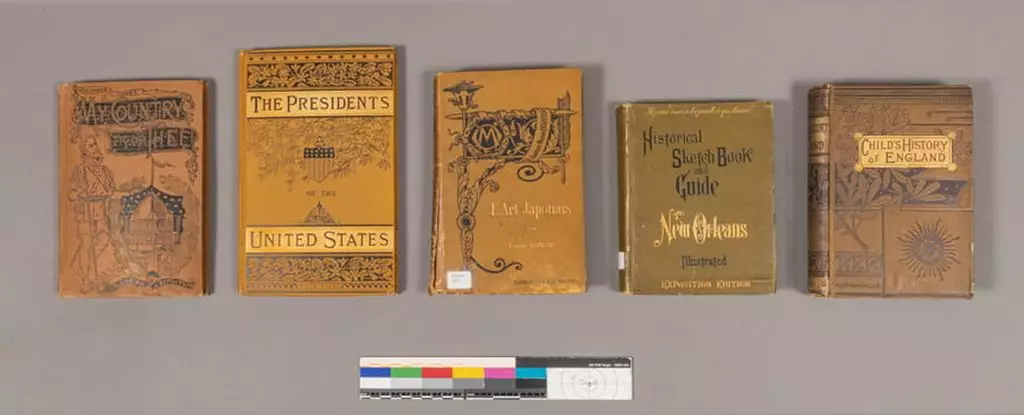Victorian-era books have long been admired for their beautiful, vibrant hues that adorned their cloth-bound covers. However, recent analysis has shed light on a dark secret lurking within these colorful volumes – toxic dyes. Lead and chromium, known for their harmful effects on health, were found in these antique books, posing a potential risk to those who handle them frequently. While the casual reader may not be in immediate danger, librarians, book dealers, and other individuals who come into regular contact with these books are at a higher risk of exposure.
During the 19th century, the use of toxic dyes in bookbinding became prevalent as new, synthetic dyes revolutionized the textile industry. Arsenic, aniline, and other heavy metals were employed to create vibrant colors that were previously unattainable using natural resources. The unintended consequences of these innovations soon became apparent, leading to a number of unfortunate deaths among factory workers and individuals exposed to these toxic substances.
In a recent study conducted by chemists at Lipscomb University, alarming levels of lead and chromium were found in samples taken from vintage books. The researchers utilized a range of testing methods, including X-ray fluorescence and inductively coupled plasma optical emission spectroscopy, to identify the presence of these harmful metals. The discovery of lead(II) chromate, a yellow pigment containing both lead and chromium, raised further concerns about the potential risks associated with handling these books.
Following the findings of the study, the researchers took immediate action to protect the public from exposure to these toxic substances. Books with high concentrations of lead and chromium were sealed in plastic and removed from circulation to prevent further harm. The team’s efforts not only underscore the importance of identifying and addressing potential health hazards in historical artifacts but also highlight the need for greater awareness and vigilance when handling antique books.
As technology advances and new research methods become available, more discoveries are likely to come to light regarding the hidden dangers lurking in everyday objects. The Poison Book Project, initiated by art conservationists, serves as a reminder of the importance of preserving our cultural heritage while also safeguarding public health. By learning from the mistakes of previous generations and taking proactive measures to address potential risks, we can ensure that future generations are not unwittingly exposed to dangerous substances.


Leave a Reply